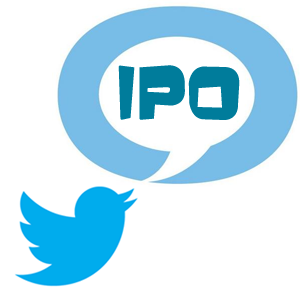 NEWS
NEWS
 NEWS
NEWS
 NEWS
NEWS
![]() With Twitter finally going public after almost seven years of being in the public eye—the social media 140 character juggernaut was founded in 2006 but found its stride in 2007—has seen the popularity of tweeting erupt in status but has had a long time in attempting to figure out how to monetize its platform. By the end of 2012, Twitter reported over 500 million registered users, generating over 340 million tweets daily, and 1.6 billion search queries.
With Twitter finally going public after almost seven years of being in the public eye—the social media 140 character juggernaut was founded in 2006 but found its stride in 2007—has seen the popularity of tweeting erupt in status but has had a long time in attempting to figure out how to monetize its platform. By the end of 2012, Twitter reported over 500 million registered users, generating over 340 million tweets daily, and 1.6 billion search queries.
Today, September 12 2013, the company tweeted, “We’ve confidentially submitted an S-1 to the SEC for a planned IPO.” It’s only proper that a tweet announced that Twitter is going public.
Though its history questions have continually been raised about how Twitter would make money and these have included things such as advertising-via-tweet, Promoted Tweets, and similar ad-supported models. In April 2013, Twitter announced the release of Twitter Ads, a self-service ad promotion platform available without an invite.
Twitter: A dominant social media force to be reckoned with
SiliconANGLE founder and CEO John Furrier has a special place in his heart for Twitter and
“I was laughed at when I told people Twitter would be the next big IPO,” says Furrier. “I guess I got a little private victory there.”
Twitter is a story about communication and web done right, adds Furrier. “Twitter is part of the fabric of the web, a sort of signaling system. In SXSW in 2007 when it really took off—we saw that people wanted to use Twitter to know where the parties were, we saw that there was a necessity for signaling. Twitter was a communication fabric in a new media called ‘real-time web.’”
In many ways, Furrier says, SiliconANGLE as a publication itself is built on the model that Twitter pioneered and owes a lot to the success and capability of that paradigm.
As a service, Twitter has been immensely valuable for mobile, social media, and even the production of demographics. It has been used by advertisers to determine the thoughtshare a product or idea had, and even keyed into to understand customer concerns (and used for customer service as a result.)
Twitter has become a de facto communication tool in these seven years to reach gigantic audiences and has seen huge favor for personal use as well as enterprise functionality. It provides a platform that outperforms even Facebook in a multitude of mobile arenas and commands an audience that makes it a behemoth communication service.
As such, the upcoming IPO shows that Twitter wants to capitalize on that market dominance and evolve to the next level.
Twitter depends more heavily on user experience than simple monetization
What Twitter did right, explains Furrier, it did in the beginning–way back in 2007 during their public launch–and that was to add value to user experience and eschew monetization so that it couldn’t infect the model. Ultimately, at the end of the day, focusing on user experience and utility value gave Twitter the foothold that makes it the social media powerhouse it is today.
Twitter is what Furrier calls a crowd-related, signaling communications utility fabric and because of these first forays into putting user experience first, Twitter has become a staple of the consumer-connected web. Also as a result, businesses who do not use Twitter almost automatically lose out on giant portions of their audience.
The IPO is a capstone for this success, Twitter isn’t grotesquely monetizing, simply seeking to use ads and revenue generation to make money alongside the user experience without compromising that. Google did a very similar thing–and it worked out surprisingly well for the search industry.
As a social media platform that exists almost entirely in 140 character messages zinging across the aether and a model that involves giving away the API essentially for free, Twitter depends heavily on the ability to promote and provide advertisement. Most tools that allow people to access Twitter pull in tweet ads and provide some sort of exposure to those using them (and the natural ease of blocking or ignoring them may factor in.)
Furrier says that he sees Twitter using the IPO to catapult themselves into the next level of production and take advantage of the giant audience, social capital, and utility that the company has already produced. The future is now.
THANK YOU